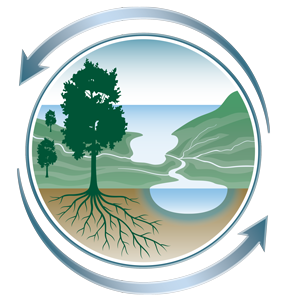April 23, 2023
Enhancing E3SM Land Model’s Photosynthesis Model Using Satellite Solar-Induced Fluorescence and Machine Learning
Exploring advanced machine learning techniques and satellite data to optimize photosynthesis modeling in E3SM Land Model for improved gross primary productivity simulations.

Optimized model solar-induced chlorophyll fluorescence (SIF) mean (left) and standard deviation (right) as predicted by E3SM Land Model and the gross primary productivity–solar-induced fluorescence machine learning relationship using the Greenhouse Gases Observing Satellite as a constraint.
[Reprinted under a Creative Commons Attribution-NonCommercial-NoDerivatives 4.0 International License (CC BY-NC-ND 4.0) from Chen, A., et al. "Improving E3SM Land Model Photosynthesis Parameterization via Satellite SIF, Machine Learning, and Surrogate Modeling." Journal of Advances in Modeling Earth Systems 15 (4), e2022MS003135 (2023). DOI:10.1029/2022MS003135.]
The Science
Modeling ecosystem productivity is challenging due to uncertainty in photosynthesis parameters. However, solar-induced chlorophyll fluorescence (SIF) is a unique proxy for productivity, and machine learning (ML) can help model the relationship between SIF and productivity. A team of researchers used satellite SIF data and flux tower–based gross primary productivity (GPP) observations to train ML models. The Energy Exascale Earth System Model (E3SM) Land Model (ELM) was fed with ML GPP-SIF models to create global SIF estimates. Using surrogate modeling and optimization techniques, researchers optimized major ELM photosynthesis parameters and produced improved spatial patterns of ELM GPP compared to other estimates.
The Impact
This research has developed a novel modeling framework that offers a promising approach for enhancing the GPP of land models while leveraging remote-sensing SIF data. Additionally, this study has identified primary drivers behind global photosynthesis changes, thereby improving understanding of the effects of environmental changes on ecosystem photosynthesis and enabling more accurate predictions of such impacts. The ML techniques employed in this research can be refined in the future with additional ground- and satellite-based observations and potentially adapted for use with other land surface models.
Summary
Accurate parameterization of key photosynthesis parameters is critical for modeling GPP but remains a significant source of uncertainty. One promising way to address this challenge is with SIF, which provides a proxy for GPP by directly capturing the photosynthesis process. ML techniques offer a robust approach for modeling the GPP–SIF relationship. A team of researchers trained boosted regressing tree and random forest ML models using data from the Greenhouse Gases Observing Satellite and in situ GPP observations from 49 eddy-covariance towers. These ML GPP-SIF models were then incorporated into ELM to generate global SIF estimates that were benchmarked against satellite SIF observations using a surrogate modeling approach, which demonstrated good model performance.
Results suggest that ML-based GPP-SIF models provide accurate predictions of spatial and temporal variations in SIF. Sensitivity analysis revealed that the fraction of leaf nitrogen in ribulose-1,5-bisphosphate carboxylase/oxygenase (RuBisCO) is the most sensitive parameter to SIF, followed by the Ball-Berry stomatal conductance slope and maximum carboxylation rate entropy. After benchmarking, posterior uncertainty in simulated GPP was substantially reduced, and the model produced improved spatial patterns of mean GPP relative to FLUXCOM GPP. Overall, this integrated approach represents a promising new avenue for improving land models and leveraging remote-sensing SIF data. With further refinements using additional ground- and satellite-based observations, this approach could further enhance ecosystem models’ accuracy and predictive power.
Principal Investigator
Jiafu Mao
Oak Ridge National Laboratory
[email protected]
Program Manager
Daniel Stover
U.S. Department of Energy, Biological and Environmental Research (SC-33)
Environmental System Science
[email protected]
Funding
This work was supported by the Terrestrial Ecosystem Science (TES) Science Focus Area (SFA) project funded by the Biological and Environmental Research (BER) Program within the U.S. Department of Energy’s (DOE) Office of Science. Support was also received from Oak Ridge National Laboratory, which is supported by the Office of Science under Contract No. DE-AC05-00OR22725, and subcontract 4000167205.
References
Chen, A., et al. "Improving E3SM Land Model Photosynthesis Parameterization via Satellite SIF, Machine Learning, and Surrogate Modeling." Journal of Advances in Modeling Earth Systems 15 (4), e2022MS003135 (2023). https://doi.org/10.1029/2022MS003135.

